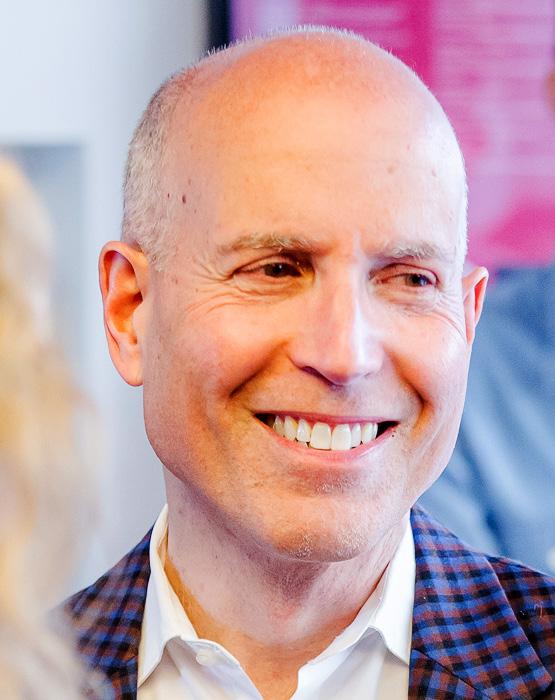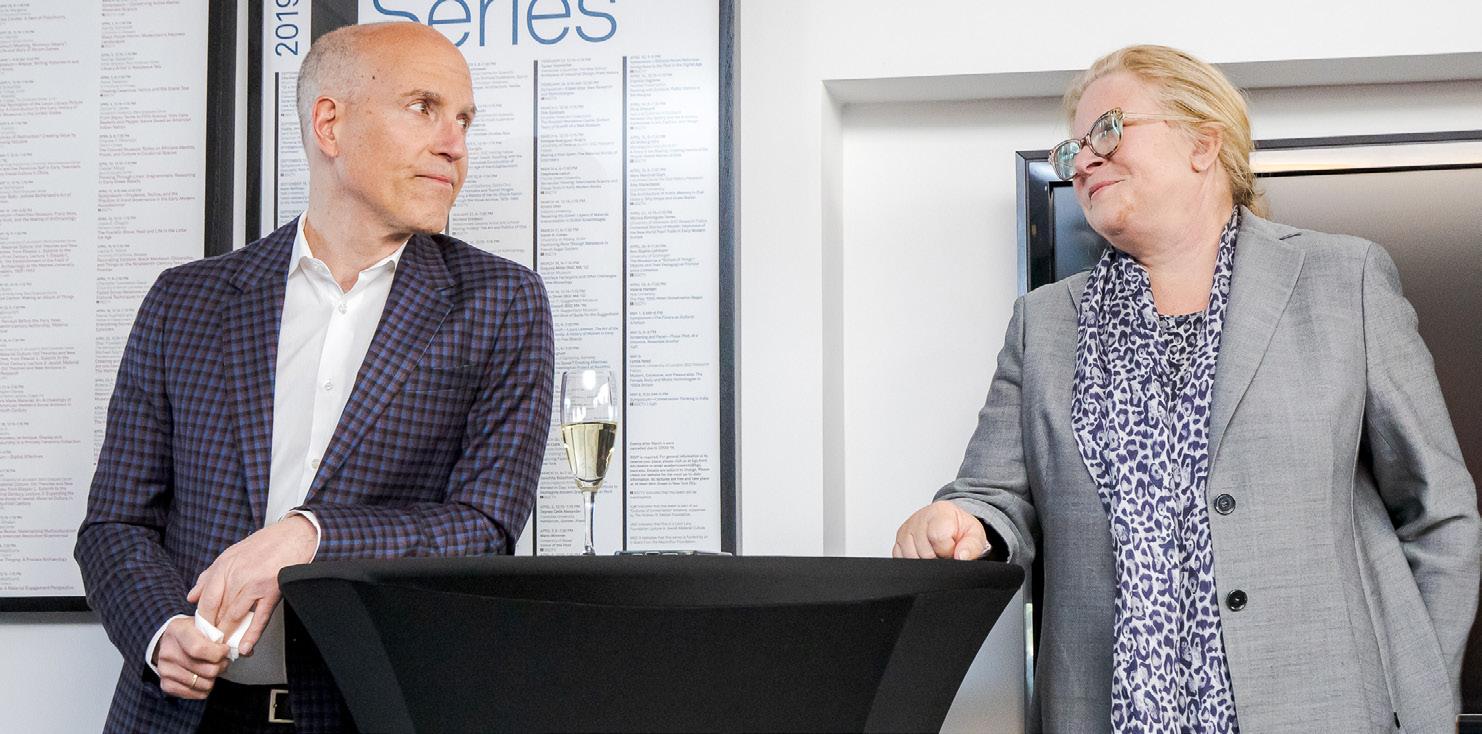
3 minute read
Dean’s Introduction
May 2023
As Susan noted in her welcome letter, Bard Graduate Center is thirty years old. For twenty of those thirty years, it sponsored new research through the development and expansion of the Seminar Series. I was proud of those wonderful events and their intellectual value as well as their social role in the institution, which extended far beyond even their intellectual contribution. But however new the research, the forms in which it was presented— the lecture and the seminar— would have been familiar to people living 170 years ago when “research” (Forschung) and the research university were born. So we decided, as if writing a grant proposal to ourselves, that in Seminar Series 2.0 we would try and develop new forms of presenting research and aim to be as innovative in form as we were for the previous two decades in content.
Advertisement
We aimed to do this by bringing in Andrew Kircher as the director of the renamed department of Public Humanities + Research (PH+R), while also continuing to support convergences among BGC’s public programming, academic vocation, and exhibitions. It is a tall order, but Year 1 was a great success and we have been under the hood making some inevitable tweaks (read: improvements) for Year 2. I will be watching how this plays out from afar.
After twenty-two years at the BGC, and seventeen as its chief academic officer (first as chair and then as dean), the time has come for me to move on. It’s been a great run. I look back fondly on many accomplishments and many good times.
Let me try briefly to say something as if from 35,000 feet above, about the course traveled and maybe about the ways ahead that will be the responsibility of others to chart. I feel that my main achievement was in having our work admired for its seriousness. This was a project conducted on many levels, formal and informal, in both obvious and subtle ways. To give one example, when we first created this publication, to ensure that the varied outputs of this institution would be visible to those who only interacted with it through only one of its enterprise-level activities, I used to call it “the Jahrbuch.” I wasn’t just joking. I had in mind the annual Jahrbuch of the Kulturwissenschaftliche Bibliothek Warburg (KBW), because I wished for BGC the kind of impact that the KBW— and then the Warburg Institute, an exemplary multidisciplinary institute for the study of the cultural past—had in the world. I talked about Warburg when I gave introductions; I wrote about the continuity between Warburg’s defense of the decorative and other “marginal” material creations from across the spectrum of human making, with BGC’s goals in mind. I also talked about BGC as being born into the historical gap that emerged in 1929 when Warburg died and the KBW lurched toward more purely intellectual history, and the Annales d’histoire économique began publishing, focusing on material history stripped of the intellectual. Our impact zone, our historical destiny—I wasn’t above speaking in these high-flown terms—was to bridge that gap. The other thing that I tried to do, for myself as well as for the institution, was to make the articulation of administrative direction a historical project—that we could be doing research and intervening in history while making policy. This is always an option, but everywhere else it is the road not taken.

I could go on, but these points—seriousness, research and an over-the-horizon vision that was actually an act of scholarly recovery— are pretty good ways to describe what I tried to do in my time here.
It was important to me to broaden the institution’s scope from a narrower vision of decorative arts and design history to material culture by hiring historians, anthropologists, archaeologists and a chemist. So was escaping from the geographical constraint of a Euro-American focus, with its warping impact on content. To fully grasp the importance of the material world means taking a worldwide view—and this is not just politics with a small “p.” For example, the first non-European decorative arts position that I hired was in Islamic art, precisely because it is a culture in which there is no division between fine and decorative art and no hierarchy that placed the object at the bottom. Studying Islamic art was simultaneously a way of making a methodological point. And the newest positions we have created, in pre-modern and modern Africa and the African diaspora, are among the achievements of which I am most proud, though I still regret the lack of faculty positions that would keep the contributions of Latin America and South Asia in view at all times.
Finally, our Cultures of Conservation initiative enabled us to build a model of a long-term cross-faculty collaboration that fully integrated teaching, research, and exhibition like nothing else we’ve done here. Yes, it was a grant-driven project, but we could do this ourselves and restructure our own curriculum to be more holistically project-driven in the same way. The model is there.
I will look from afar with pride and pleasure at BGC as it goes from strength to strength. To my dear, dear colleagues, I extend my arms in virtual embrace. I could not imagine a more collegial and supportive institution. I wish you all well, and I am grateful to you for all that you have given me.
Peter N. Miller Dean and Professor Dean's










